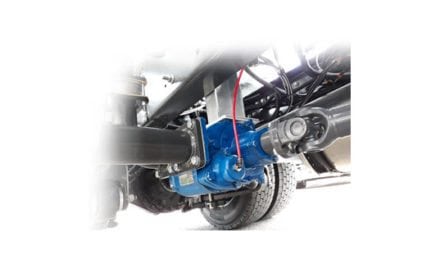Submitted by SiefkesPetit Communications for BOLT System
With the mad rush now over for fleets to install ELDs to comply with the federal mandate, many are breathing a sigh of relief.
“Industry reports indicated that up to 60 percent of fleets were still without ELDs in December,” said Jerry Robertson, chief technology officer for BOLT System, which offers fleet management programs to fleets. “So, December was a crazy month with installs and training for many new users.”
According to Robertson, when fleets new to ELDs do come up for air, there is a world of possibilities when it comes to data capture and fleet efficiency gains. “It’s the ‘now-what moment’ that many encounter once the dust has settled on installations,” he said. “There is so much more than hours-of-service-tracking. Those new to ELDs, and what a fleet management system can provide, should know what they are.”
But first, it all depends upon the type of ELDs that were purchased.
“There are many different flavors out there – some that provide the minimum with GPS and HOS, others offer an API (application programmable interface),” said Robertson. “With those, you have the golden goose in data collection. A fleet manager can set up the ELD to capture and relay information through a fleet management program.”
Who is a candidate for a fleet management system? Robertson said BOLT System works with small and large companies alike. “But typically, you need to run about 10 trucks to start seeing measurable benefits,” he said.
Robertson said the low-hanging fruit in utilizing a fleet management program is in pedal and line-haul deliveries, where there is a normal flow with set deliveries. “Companies like BOLT can work with a fleet to set up a workflow system, which includes geo-fencing at known delivery sites,” explained Robertson. “When the truck breaks the ‘fence’ and stops, that triggers the system to document and time-stamp the duration of the delivery. When the driver resumes, that’s noted as well. This way a fleet manager knows exactly the amount of time the delivery took – and if it’s longer than it should be, the fleet now has documentation on detention. Detention is an absolutely huge issue. A recent DOT study showed detention costs carriers up to $302 million annually. With fleet management documentation, you can show your customer the problem and go about working on a mutually beneficial solution – put the onus on the shipper to speed the unloading process – or agree on adding detention time charges.
“The beauty of a fleet management system is you can look at the micro, and the macro with your entire fleet, and can see exactly how efficiently your fleet operates,” Robertson said. “Then you can make strides to improve your efficiency based on hard data.”
Another money-making capability of a fleet management system is in load documentation, breakage, and billing. “This is something that is easy to set up for our customers,” said Robertson. “Many of the ELDs also function as portable tablets, with a small camera lens embedded. If there is a freight shortage or breakage, a picture can document the problem. Everything can be documented on the spot, along with signature and bill of lading capture. Once it’s input to the ELD, it can be sent to the fleet management program and an invoice can be sent to the customer’s accounts payable department, all before the taillights leave the shipping dock. That’s a far cry from paper processing when billing delays can take a week or more.”
According to Robertson, tracking and billing represent just the tip of the iceberg when it comes to a fleet management program. “Next you can add dispatch, based on logging in distribution points – even see your entire fleet in real time and automatically alert customers to an upcoming delivery time based on GPS coordinates. You can handle driver pay, in addition to customer billing. And, you can even assign activity-based pay – something that our customers are increasingly asking for.”
And down the road? Robertson smiled. “A lot is happening,” he said. “Before long, our fleet management program will be able to incorporate real-time weather, to help our customers better route plan as they’re in motion. That will be something.”









